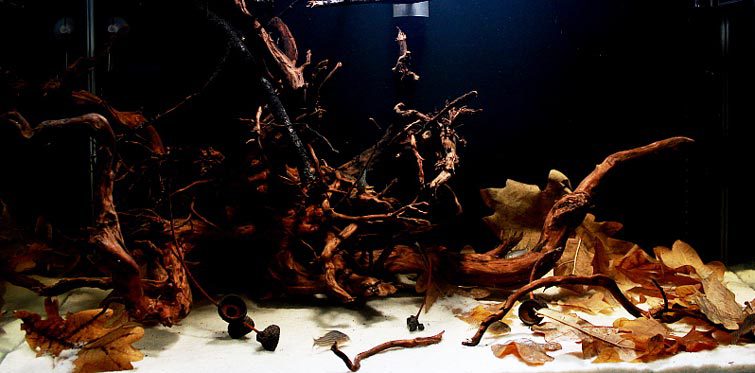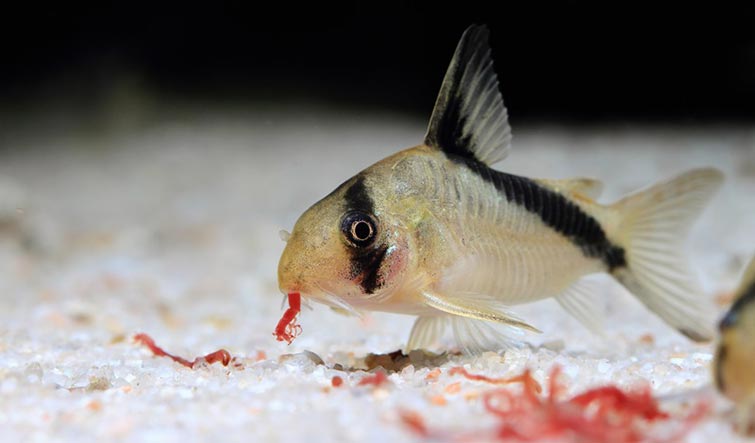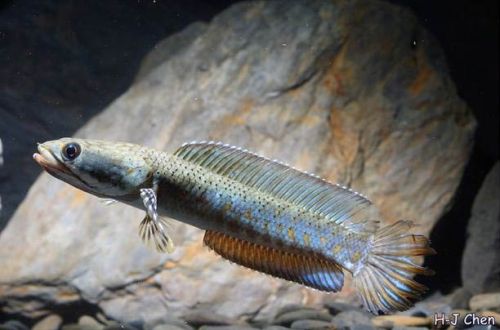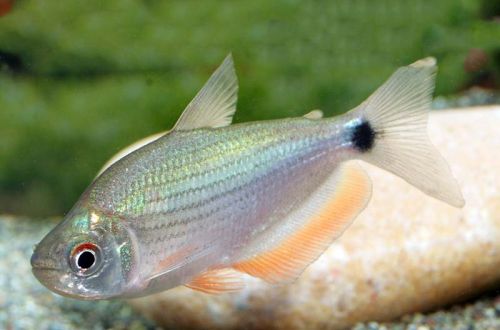
Contents of catfish Corydoras
These relatively small catfish prefer to stay in groups, so it is recommended to purchase a flock of 5 individuals, which will comfortably fit in an aquarium from 40–50 liters. They are predominantly nocturnal, being active in the dark or at dusk. During the day, in bright light, they hide in shelters. Like other catfish, Corydoras spend most of their time near the bottom, so the main emphasis in the design of the aquarium is on the lower tier. It is necessary to provide for several secluded places, for example, formed from branched snags with thickets of plants, or from any other decorative elements. Fine-grained gravel or sand with a depth of at least 5 cm is used as a substrate. Such soil without sharp particles will protect the sensitive antennae located near the mouth of the fish and help them search for food.
Contents
Aquarium biotope with catfish Corydoras
 Aquarium-biotope, imitating the natural habitat of Corydoras catfish, with sandy soil, snags and a layer of fallen leaves, which gave the water a tea shade
Aquarium-biotope, imitating the natural habitat of Corydoras catfish, with sandy soil, snags and a layer of fallen leaves, which gave the water a tea shade
In nature, the bottom of the reservoirs is covered with a layer of fallen plant material, which is an integral part of the ecosystem of the habitat, so experienced breeders also place the dried leaves of some trees in the aquarium. The leaves not only give the design more naturalness, but also affect the composition of the water, making it similar to that in which fish live in nature. By analogy with the process occurring in natural reservoirs, when the leaves decompose, tannins are released, acidifying the water and giving it a tea shade. Read more in the article “Which tree leaves can be used in an aquarium.”
In general, the decoration can be arbitrary, and the use of leaves is optional. The main thing is soft coarse-grained soil and several shelters.
When keeping catfish Corydoras, design is important, but not decisive. The well-being of the fish largely depends on the quality of the food supplied, the correct choice of aquarium neighbors and the maintenance of a consistently high water quality, within an acceptable range of temperatures and values of hydrochemical parameters.
Food
Feeding once a day is sufficient. They will eat almost anything that sinks to the bottom. It is advisable to provide a varied diet of dry, frozen and live foods. The best time to feed is in the evening, before the lights go out.
Feeding catfish Corydoras
 Catfish Corydoras, feeding on the bottom of live food from bloodworms
Catfish Corydoras, feeding on the bottom of live food from bloodworms
Behavior and Compatibility
As already mentioned above, it is necessary to acquire a small flock and not keep Corey alone. They are neither aggressive nor territorial, making them excellent tankmates for other equally peaceful fish. Good partners will be small catfish, tetras, zebrafish, barbs, rasboras, some gourami, dwarf South American cichlids, livebearers and many others, as well as shrimps and snails. Accordingly, any large predatory fish would be considered a poor choice.
Water composition, aquarium care
Over many generations of life in aquariums, Cory catfish have adapted to a slightly different aquatic environment than the one in which their wild relatives live. For example, water may no longer contain tannins, and the range of comfortable pH and dGH values has expanded. Although slightly acidic soft water is still considered optimal. The health of the ecosystem depends on the uninterrupted operation of the installed equipment, primarily the filtration system, as well as the regularity of the obligatory aquarium maintenance procedures, such as weekly replacement of part of the water with fresh water and the timely removal of organic waste (food leftovers, excrement).





